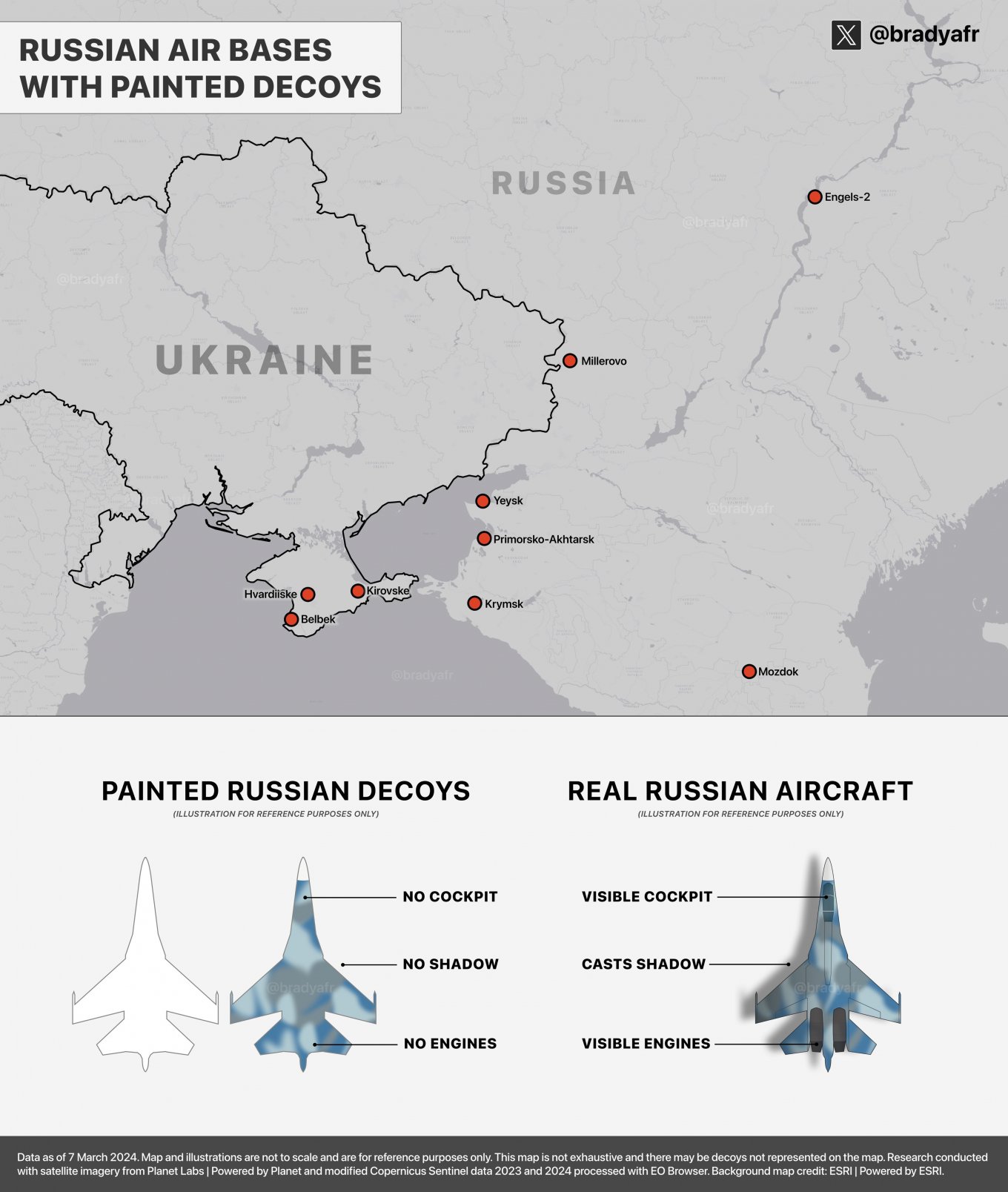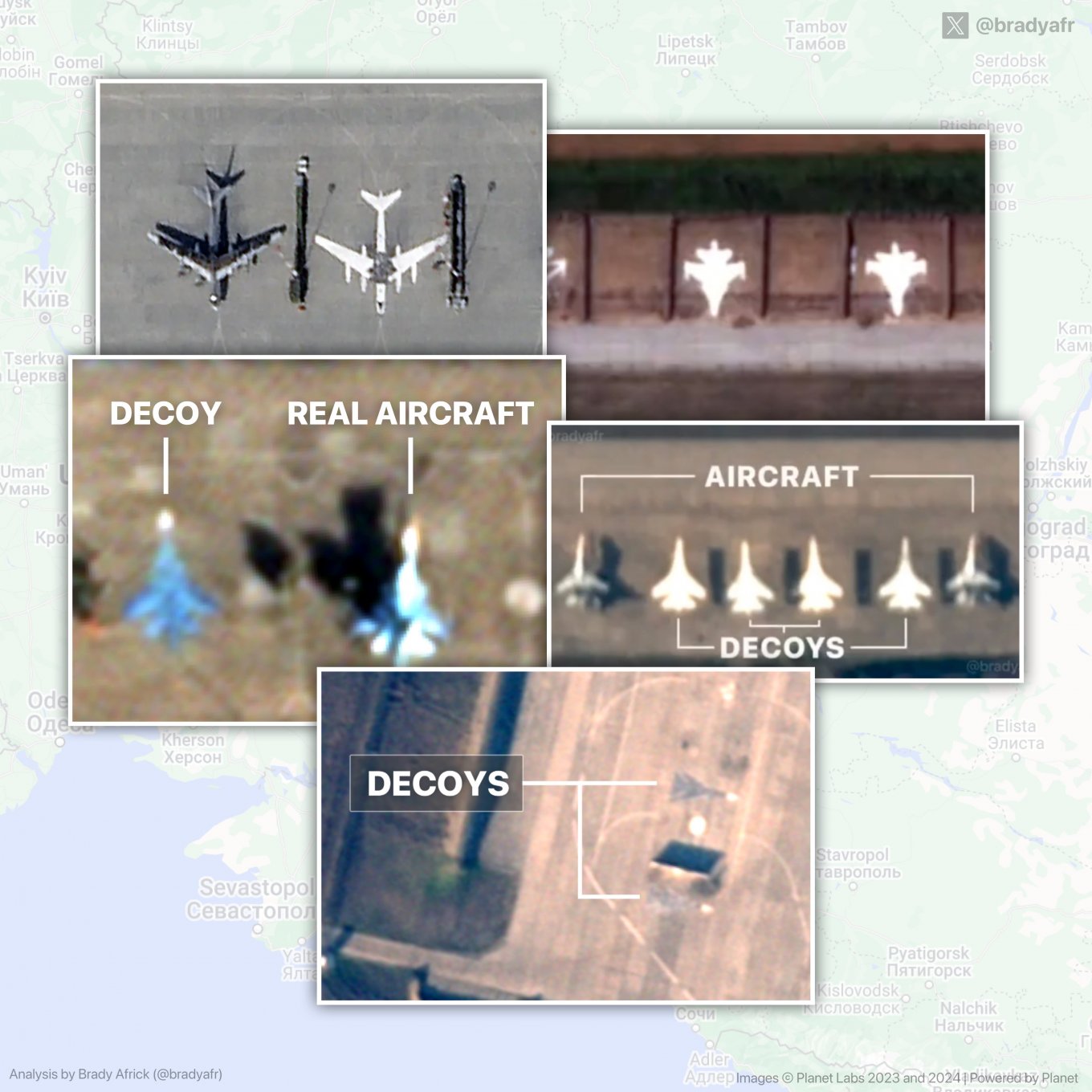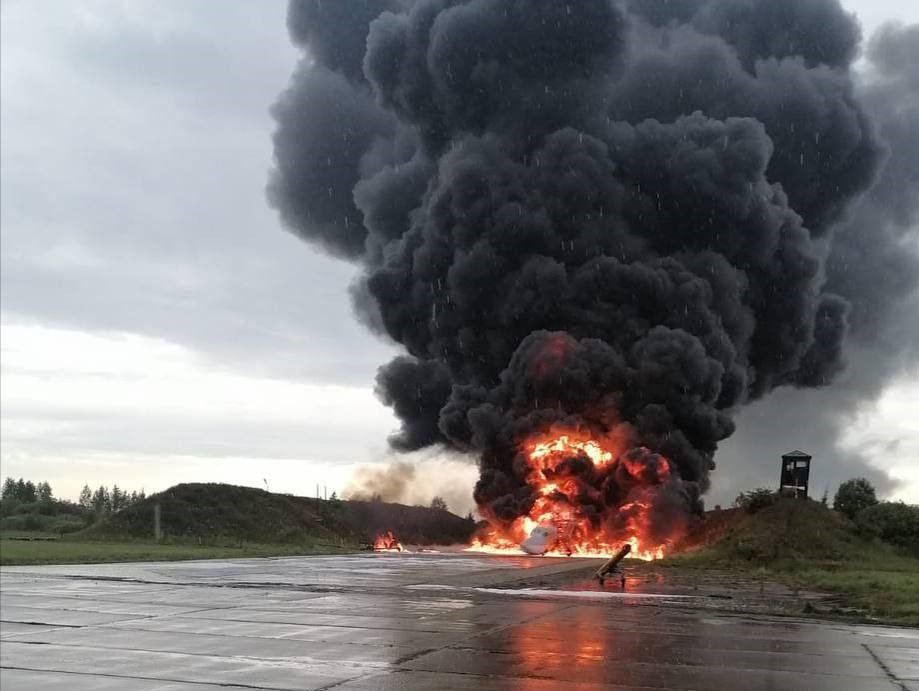During the autumn and winter of 2023, multiple reports appeared about russian Aerospace Forces personnel drawing aircraft on their airfields. The russians were replicating all kinds of their aircraft, from Su-27/35 fighters to Tu-95MS strategic bombers, like at the Engles airfield, for example.
The first guess that became quite popular back then was that those paintings are supposed to misdirect the drones, relying on optical sensors for target acquisition, to attack the decoys visually resembling real aircraft; or alternatively, fool the personnel in charge of planning such attacks who are searching for potential opportunities by looking at satellite images. But recent data, summarized from long-term monitoring of russian air bases operating in relative vicinity of the Ukrainian frontline, reignites the discussion and suggests a new explanation, which Defense Express presents to the discourse.
Read more: Satellite Data Reveals At Least Six russian Su-34 Fighter Jets Did Not Return

With the graphics above, satellite imagery analyst Brady Africk highlights nine locations where russians were seen making silhouettes of aircraft or in some cases full-color paintings. Nevertheless, the drawings lack realism anyway: they don't cast any shadow, miss details, and never move around. A person attentive enough would easily spot the difference, especially a military specialist in satellite reconnaissance. Knowing that, no one would try to direct the drones onto such a false target in the first place.

Moreover, synthetic-aperture radar (SAR) satellites don't see the paintings at all, and for a reminder, Ukraine owns one of those satellites.

Still, the extent to which russians are invested in this practice is quite significant. Nine airfields is a lot, considering it earlier took looking over just four to find out six Su-34s did not return to their home air bases. In fact, that episode was illustrative of how satellite imagery is used as a method to confirm the losses inflicted on the enemy. That is because often russian aircraft, even fatally damaged, fall on russian-controlled territory, leaving no visual evidence to the Ukrainian side.
That leads to an alternative explanation to the phenomenon we have seen russians been doing all this time: the paintings could serve the purpose of concealing the losses Ukrainian air defense has inflicted. In case some aircraft gets shot down without Ukrainian soldiers on the site being able to confirm the kill, satellite reconnaissance becomes an important and sometimes the only tool available.

For a reminder, taking a fresh sat-photo of a particular location, like a specific airfield, takes time, so having a painting swiftly drawn instead of a lost unit can mislead the enemy and gain some tactical advantage for the time being, until it becomes apparent that a perceived active combat unit stopped moving around for too long for some reason. As the analyst Brady Africk has shown by his example, it takes a long-term investment of time and effort to monitor russian airfields and mark all the false aircraft silhouettes.
The fact such paintings were seen predominantly near the frontline, and not on rear bases with expensive and important strategic aircraft, supports the idea of those fakes being sort of a "checklist of casualties" because both forward and rear bases suffer from Ukrainian attacks with more or less equal frequency.

Read more: Fearing an Attack by Ukrainians, russians Painting Silhouettes of Tu-95MS Bombers at the Engels Air Base














